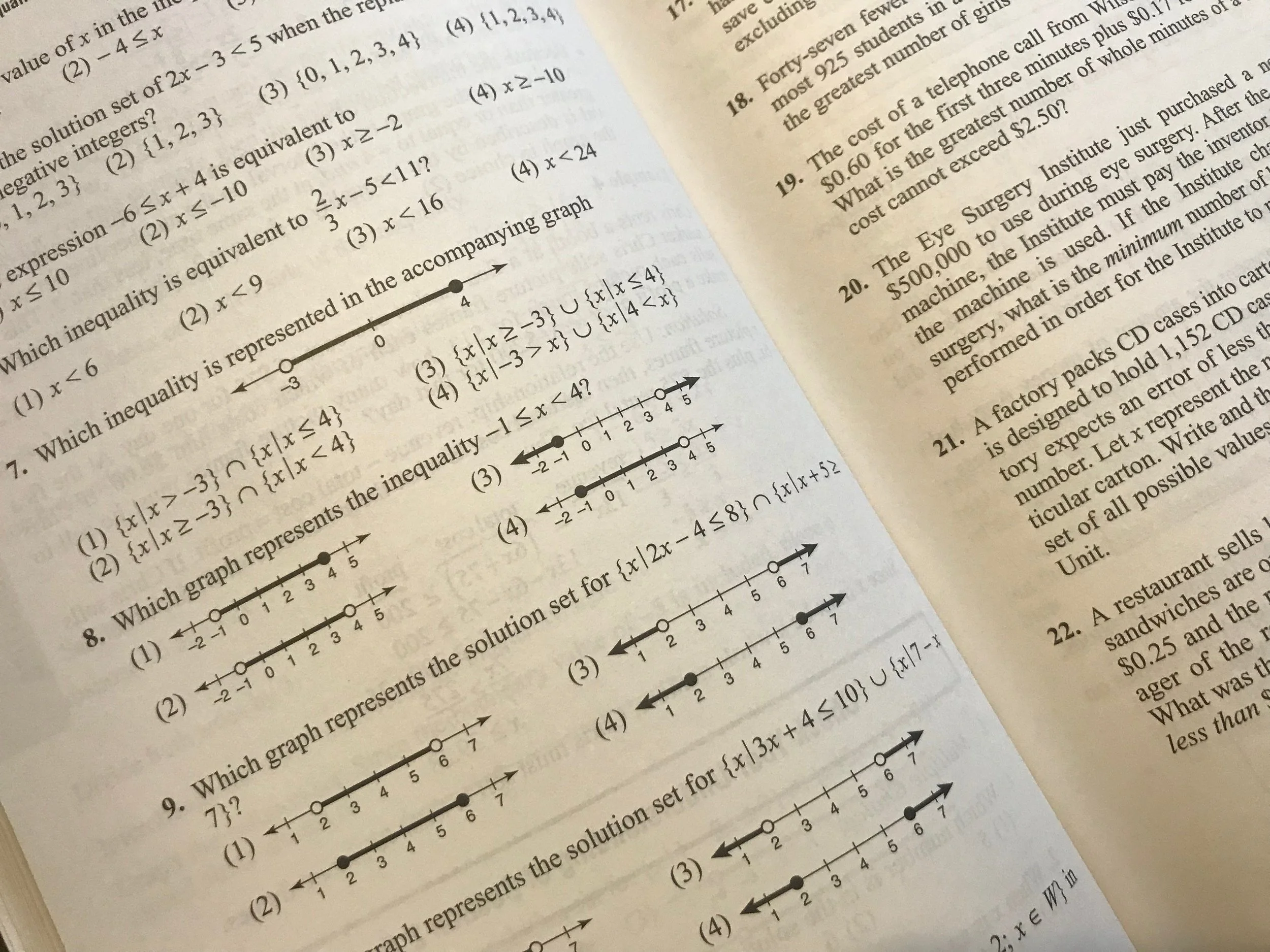The end is nigh! No, it’s not the apocalypse—it’s just the final post in my Baby Algebra upgrades series. In these articles, I’ve been helping you level up the allegedly “easy” math know-how you learned in middle school so that you’re prepared for the (significant number of) places where these skills crop up on the SAT/ACT. (If you missed the beginning of the series, here it is: why you may not know all the math you think you know.)
And we’ve done a lot of leveling up! After these posts, you’ve now got a firm hold on:
What linear equations are, and what they look like in word-problem form.
Why more scenarios than you originally thought are secretly systems of linear equations in disguise.
How to recognize how many solutions a system of linear equations has.
That’s a lot of mighty math! Great work.
Today, I’m sending you off with one final hack. This trick will help you work swiftly and effectively with inequalities that show up on the SAT as word problems, allowing you to navigate a whole category of question that flummoxes many students. And the best part? Although it’s straightforward and commonsense, my one-on-one test prep clients have told me that it’s not taught in math classes—and I’ve also never seen it in test-prep books. So this one’s my gift to you!
SAT and ACT Math Skills: How to Change Compound Inequalities to Single Inequalities
The ACT and SAT sometimes contains word problems with a possible range of values that can easily be translated to a compound inequality. For example, let’s say there’s a certain rollercoaster that you can only ride if you’re at least 60” tall and no taller than 78”.
Normally, you would simply express this as a compound inequality like so:
60" ≤ height ≤ 78"
However, the answer choices offered to you might not express this range in that same format. It might just represent this same information as one single inequality. In that case, your job is to recognize the correct answer by being able to accurately toggle between the format you’re used to...and one you’re not.
In case you should encounter this tricky situation, here’s how you work out the answer.
You’re going to transform a compound inequality to a single inequality like this:
1) Calculate the average of the endpoints. In our example, I’d find the average of 60 and 78, which is 69, because (60+78)/2 = 138/2 = 69.
2) Find the “leeway”—as in, how far away is your average from either of your extreme values? In this example, our “leeway” is 9, because 69 is 9 away from 60 (the low extreme) and 69 is 9 away from 78 (the high extreme).
3) Combine these three pieces of information together like this:
| variable – average | ≤ leeway
OR
| average – variable | ≤ leeway
To polish off our theme park ride example, I could write either of the following and be correct:
| 69 – h | ≤ 9 OR | h – 69 | ≤ 9
Now, what about the inverse of that setup? Let’s say we are given a single inequality indicating that Judy wants her SAT score to be within 20 points of 1500. Or “the difference between her score and 1500 is less than 20.”
| 1500 – s | ≤ 20
To turn this single inequality with absolute values into a compound inequality, we need simply do the following:
average – leeway ≤ variable ≤ average + leeway
Our test score example would therefore become:
1500 – 20 ≤ s ≤ 1500 + 20
which reduces to 1480 ≤ s ≤ 1520
And there you have it: a concept you’ll encounter in SAT and ACT word problems, now conveniently translated to a solvable inequality. This kind of time-saving skill is crucial for standardized tests: it’s what keeps you moving speedily and accurately through your math sections instead of sitting there baffled, losing precious minutes and confidence (…and the points that go with them!). All of my private tutoring students work on these kind of Baby Algebra upgrades…and we always see results in their scores. Now you can see those improvements in your Math section score, too!
That’s it, folks. Your algebra should now be ACT- and SAT-ready.
Though Baby Algebra has been a relatively brief series of refreshers, it’s introduced you to some serious treasure chests of SAT and ACT points. Of course, if you’d like to more fully upgrade your math skills (and in a way that’s tailored specifically to YOU!), you can contact me here to learn more about one-on-one tutoring. Or, if you prefer to study on your own, my SAT Math Cram Plan and ACT Math Cram Plan let you do just that!




